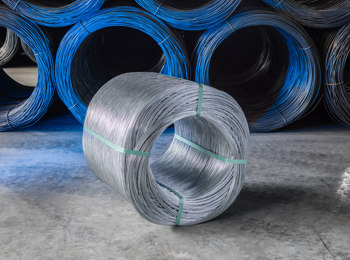Nën . 29, 2024 14:49 Back to list
Current Trends in Gabion Pricing in China for 2023
Understanding China Gabion Prices An In-Depth Analysis
In recent years, gabions have become increasingly popular in construction and civil engineering due to their versatility and effectiveness in various applications, including erosion control, landscaping, and structural support. Gabions, which are wire mesh containers filled with rocks, concrete, or other materials, provide stability and strength to various structures. As the demand for gabions continues to grow, understanding the pricing trends and factors influencing costs in China—a major manufacturer and exporter of gabion products—is essential for project planners, engineers, and contractors.
Factors Influencing Gabion Prices in China
1. Material Costs The primary component of gabions is wire mesh, typically made from galvanized steel or stainless steel. The prices of these raw materials fluctuate based on global steel market trends. Additionally, the type of stone or aggregate used to fill the gabions can also impact the overall cost. High-quality materials generally lead to higher prices, while locally sourced, lower-grade materials may offer a more economical alternative.
2. Manufacturing Processes The production techniques employed by manufacturers also play a significant role in pricing. Labor costs, which vary depending on the region and expertise of the workforce, can influence the final price. Moreover, the technology and machinery used in the manufacturing process can affect efficiency and production costs, which are reflected in the final product prices.
3. Quantity and Scale of Purchase Bulk orders often result in lower prices per unit. This volume discount is an essential consideration for larger projects or contractors looking to purchase gabions in significant quantities. Negotiating prices with suppliers can lead to favorable terms, especially when establishing long-term contracts.
4. Shipping and Logistics As many gabion components are manufactured in China and exported globally, shipping costs can significantly impact the final price. Factors such as distance, shipping methods (air freight vs. sea freight), and associated tariffs all contribute to the overall logistics expenses. These costs can fluctuate due to changes in international trade policies and fuel prices.
china gabion prices

5. Market Demand and Supply Like any other commodity, the prices of gabions are influenced by market dynamics of supply and demand. During peak construction seasons, when demand surges, prices may increase. Conversely, during off-peak periods, manufacturers may lower prices to maintain sales volumes, thus creating a seasonal pricing structure.
Current Pricing Trends
As of 2023, the average price range for gabions in China varies widely based on the aforementioned factors. Standard welded wire gabions can range from $15 to $50 per cubic meter, depending on the wire gauge, coating type, and dimensions required for specific projects. Additionally, prices may vary significantly based on regional manufacturing hubs within China, such as Hebei, Shandong, and Jiangsu, each characterized by their production capabilities and raw material access.
While transportation costs can add to the expense, recent technological advancements in logistics and reduced tariffs in some regions may offset some of these increases. Moreover, sustainable practices in the sourcing of materials are gaining traction, potentially impacting costs as manufacturers adapt to eco-friendly methods.
Conclusion
Understanding the pricing of gabions in China involves a comprehensive consideration of various influencing factors, including material costs, manufacturing practices, purchase volumes, and market dynamics. For those in the construction and engineering sectors, remaining informed about these variables can lead to better budgeting and project planning. As the industry continues to evolve, staying updated on market trends and price fluctuations will be essential for making informed procurement decisions and ensuring the success of construction projects involving gabions.
-
Visualizing Gabion 3D Integration in Urban Landscapes with Rendering
NewsJul.23,2025
-
The Design and Sustainability of Gabion Wire Mesh Panels
NewsJul.23,2025
-
The Acoustic Performance of Gabion Sound Barriers in Urban Environments
NewsJul.23,2025
-
Mastering the Installation of Galvanized Gabion Structures
NewsJul.23,2025
-
Gabion Boxes: Pioneering Sustainable Infrastructure Across the Globe
NewsJul.23,2025
-
Custom PVC Coated Gabion Boxes for Aesthetic Excellence
NewsJul.23,2025
-
Installation Tips for Gabion Wire Baskets in Erosion Control Projects
NewsJul.21,2025






